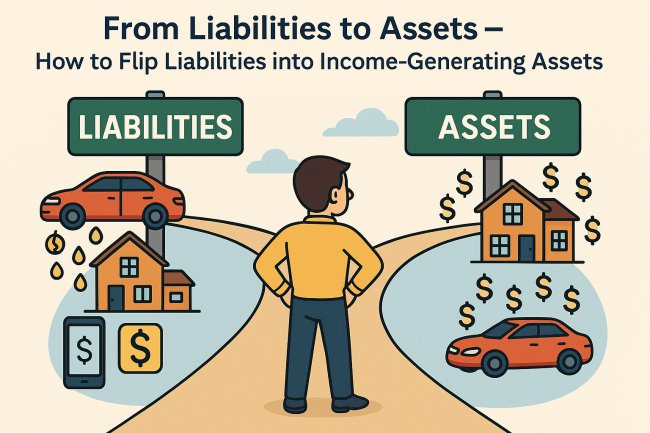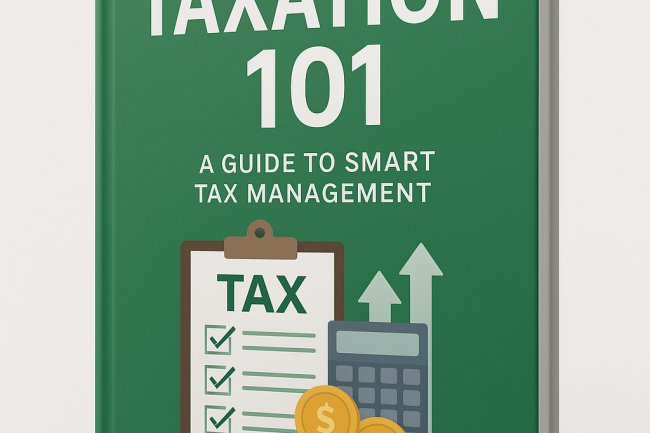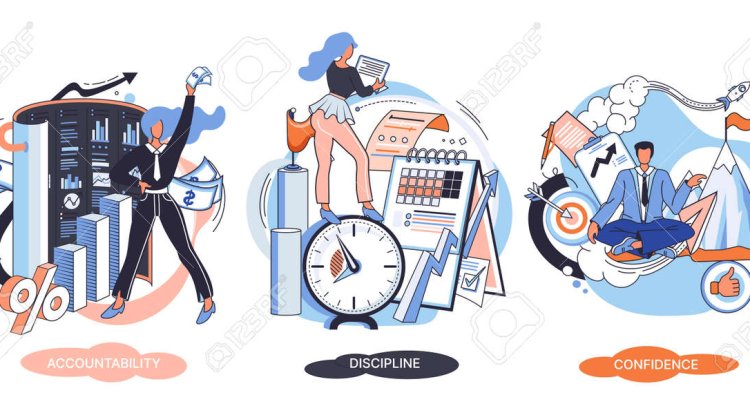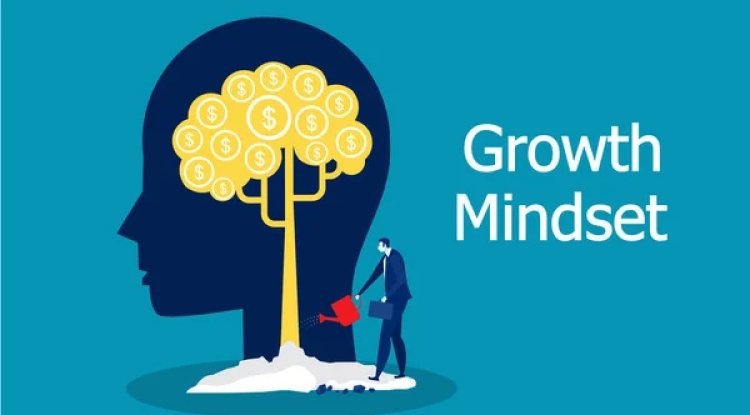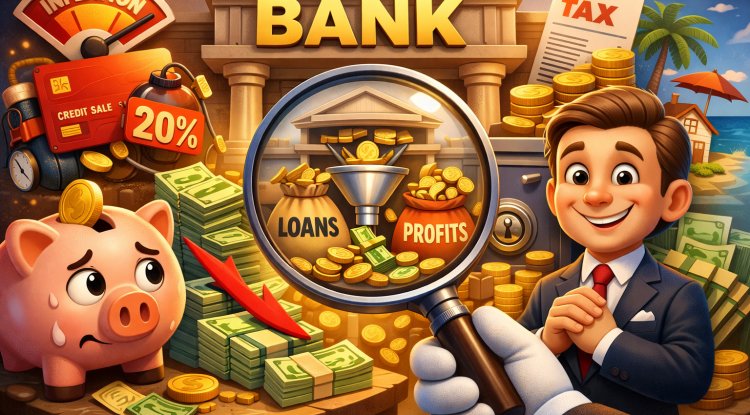Entrepreneurship and Business Finance: How to Think Like an Investor and Build a Scalable Business
A comprehensive financial freedom guide for entrepreneurs — learn how to think like an investor, master cashflow, build scalable profits, manage records, access funding, and grow your business from a side hustle into a structured company.

1. The New Age of Entrepreneurship
In today’s fast-paced economy, financial freedom isn’t achieved by working longer hours — it’s achieved by learning to make money work for you. The era of trading time for money is fading, and the rise of digital entrepreneurship has opened doors for anyone willing to think differently.
From a global view — whether in Kenya, Nigeria, the U.S., or the UAE — entrepreneurs are realizing that wealth creation begins with business intelligence, not luck. The difference between a struggling hustler and a thriving investor lies in how they think about money, risk, and opportunity.
If you want to achieve financial freedom, your mindset must evolve from “How do I earn more?” to “How do I make my money earn more for me?”
2. Thinking Like an Investor — Not Just a Business Owner
Most small business owners work in their business instead of on it. They think like workers, not investors. An investor’s mindset focuses on three main principles:
a. Leverage
Investors don’t rely only on their effort — they use systems, people, and technology to multiply output.
Example: Instead of baking cakes all day, an investor creates a bakery system that runs without their presence.
b. Return on Investment (ROI)
Investors always ask: “What return will this activity generate?” Every shilling or dollar must be measured against potential profit, growth, or brand equity.
c. Time Value of Money
Time is the ultimate resource. A business that ties up all your time isn’t freedom — it’s a trap. True investors delegate, automate, and scale.
3. Turning Ideas into Profitable Ventures
Every successful business starts as an idea — but not every idea becomes a business. The difference lies in execution, market research, and monetization.
a. Validate Before You Build
Don’t fall in love with your idea; fall in love with your customer’s problem. Validate your business concept through surveys, landing pages, or MVPs (Minimum Viable Products).
Ask:
-
Does this idea solve a painful problem?
-
Are people already spending money to fix it?
-
Can I deliver a better or cheaper solution?
b. Build a Minimum Viable Product
Start lean. Test your idea with the smallest version possible — one that allows real customers to interact and give feedback.
c. Find Your Unique Edge
Your competitive advantage could be cost, speed, quality, or customer experience. The goal is to differentiate or die.
4. Mastering Business Cashflow Management
Cashflow is the heartbeat of every business. Many entrepreneurs fail not because their product is bad, but because they mismanage their cash.
a. Understand the Cashflow Cycle
Know when money comes in and goes out. Track:
-
Sales inflows
-
Inventory costs
-
Overheads (rent, salaries, utilities)
-
Loan repayments
b. Separate Business and Personal Finances
This is a golden rule. Mixing them leads to confusion, tax problems, and poor decision-making.
Solution: Open a dedicated business account and pay yourself a fixed salary.
c. Build a Cash Reserve
Set aside 3–6 months of operating expenses. This protects your business during slow seasons or emergencies.
d. Monitor with Tools
Use simple software like QuickBooks, Xero, or Wave Accounting to track inflows, outflows, and profitability. Even Excel works if used consistently.
5. Pricing and Profit Models That Work
Your pricing determines your profit. Yet many entrepreneurs underprice themselves out of business.
a. Value-Based Pricing
Don’t charge for time — charge for transformation. Price based on the value customers receive, not your effort.
Example:
A web designer shouldn’t charge $100 for hours worked but $1,000 for helping a client generate $10,000 in sales.
b. Break-Even Analysis
Know the minimum sales you must achieve to cover costs. Anything beyond that is profit.
Formula:
Break-Even Point = Fixed Costs ÷ (Selling Price – Variable Cost per Unit)
c. Profit Margins
Set clear targets:
-
Gross Margin: 30–60%
-
Net Profit Margin: 15–25%
These vary by industry, but maintaining healthy margins ensures sustainability.
6. Record-Keeping and Simple Accounting
Good record-keeping isn’t just for taxes — it’s a mirror that shows your business’s health.
a. Daily Tracking
Record all income and expenses. Use simple tools or a notebook. The key is consistency.
b. Monthly Review
Analyze your profit and loss (P&L) statement, balance sheet, and cashflow statement monthly.
c. Audit Trail
Keep receipts, invoices, and bank statements organized. In case of grants, investors, or loans, these become your credibility proof.
d. Learn Basic Accounting Terms
-
Assets: What your business owns.
-
Liabilities: What you owe.
-
Equity: Your ownership stake.
-
Revenue: Income earned.
-
Expenses: Money spent.
-
Profit: What remains after all costs.
7. Accessing Capital and Funding
Every growing business eventually needs funding. The key is to understand the right funding type for your stage.
a. Self-Funding (Bootstrapping)
Start small, reinvest profits. This builds discipline and ownership.
b. Bank Loans
Banks prefer businesses with:
-
Financial records (at least 6–12 months)
-
Collateral
-
Clear repayment plans
Tip: Apply for asset financing or working capital loans instead of large lump sums.
c. Investors (Equity Funding)
Angel investors and venture capitalists fund businesses with growth potential.
You must present:
-
A solid business plan
-
Scalable model
-
Clear exit strategy
d. Grants
Government programs, NGOs, and accelerators (like Tony Elumelu Foundation or Mastercard Foundation) offer grants to startups in Africa and globally.
e. Crowdfunding
Platforms like Kickstarter, GoFundMe, or M-Changa allow you to raise small amounts from many people who believe in your idea.
8. From Side Hustle to Structured Company
Many entrepreneurs start as one-person hustles — selling online, freelancing, or running a shop. But true financial freedom comes when your business becomes a system that works without you.
a. Register Your Business
Formalize your operations. Registration opens doors to tenders, bank accounts, and funding.
b. Build Systems
Document your processes. Automate marketing, payments, and reporting.
Example tools: Trello, Notion, Zapier, Google Workspace.
c. Hire Smart
Don’t hire friends — hire for skills and results. Train your team to understand your vision.
d. Build a Brand, Not Just a Product
People remember brands that stand for something. Define your mission, colors, and tone. Consistency builds trust.
e. Create Departments
Even if you’re small, separate functions mentally:
-
Sales & Marketing
-
Finance & Accounts
-
Operations
-
Customer Service
f. Scale Strategically
Once your systems are stable, expand geographically or digitally. Introduce complementary products or services.
9. Scaling and Investor Readiness
To attract big investors, your business must look investable. Investors analyze data, not dreams.
a. Demonstrate Traction
Show consistent growth in:
-
Revenue
-
Customer base
-
Retention rate
b. Have a Clear Financial Model
Outline how you make money, how much, and how it scales with more investment.
c. Maintain Transparency
Investors value honesty more than perfection. Always present realistic numbers.
d. Corporate Governance
Create accountability — even if it’s just a small advisory board or mentor group.
10. Financial Freedom Through Business Intelligence
True financial freedom doesn’t come from random hustle; it comes from structured business and disciplined financial habits.
a. Automate Income
Create recurring revenue models:
-
Subscriptions
-
Memberships
-
Retainers
b. Diversify
Reinvest profits into stocks, bonds, or real estate. Let your business income fund your investment portfolio.
c. Protect Your Wealth
Get insurance for business assets, health, and income. Risk management is wealth management.
d. Keep Learning
Entrepreneurship evolves. Stay updated with courses, books, and mentorship.
11. Biblical and Faith-Based Wisdom for Entrepreneurs
The Bible offers timeless principles of wealth creation.
-
Proverbs 13:11: “Wealth gained hastily will dwindle, but whoever gathers little by little will increase it.”
-
Luke 14:28: “For which of you, intending to build a tower, does not first sit down and count the cost?”
These verses remind entrepreneurs that discipline, planning, and patience are the foundation of lasting prosperity.
Faith-driven entrepreneurship combines purpose with profit. When your business solves problems and uplifts people, you align with divine abundance.
12. Example: From Side Hustle to Scalable Business
Meet Ruth, a Nairobi-based baker who started with one oven in her kitchen. She tracked expenses manually, kept clear records, and reinvested profits.
Within two years:
-
She registered her brand, “Ruth’s Treats.”
-
Secured a loan for industrial equipment.
-
Built a small delivery team.
-
Partnered with supermarkets for retail shelves.
Today, she employs five people, serves hundreds of clients monthly, and earns passive income through cake courses online.
That’s what financial intelligence looks like — not overnight success, but consistent structure and strategy.
13. The Financial Freedom Roadmap (Action Steps)
-
Define Your Vision: What does freedom mean to you?
-
Separate Finances: Create business and personal accounts.
-
Set Profit Targets: Don’t just aim for sales — aim for margins.
-
Track Every Coin: Know your numbers daily.
-
Build Systems: Automate where possible.
-
Access Funding: Start small, scale responsibly.
-
Diversify Income: Don’t depend on one source.
-
Invest Back Wisely: Reinvest profits into scalable opportunities.
-
Stay Accountable: Get mentors or business advisors.
-
Keep Faith Alive: Combine diligence with divine direction.
14. Final Thoughts
Financial freedom through entrepreneurship isn’t reserved for the rich — it’s for the disciplined. When you learn to think like an investor, manage your cashflow, keep accurate records, and scale smartly, your business becomes a wealth-generating machine.
The journey from hustle to empire begins with knowledge, structure, and consistency.
Build. Grow. Multiply.
Because true wealth is created, not wished for.
What's Your Reaction?







